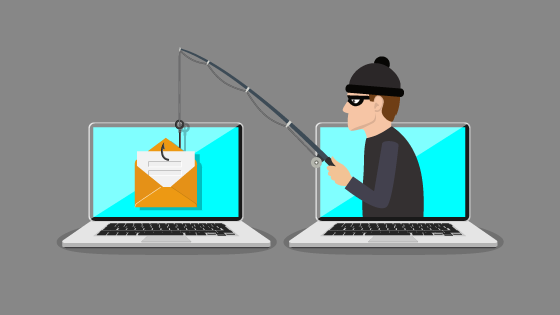Palo Alto Networks & Portnox Join Forces On Cloud-Delivered Threat Response Solution

Joint Threat Response Solution
In recent months, Portnox and Palo Alto Networks joined forces to better deal with the current cyber security threat landscape, now offering a powerful threat response solution that’s delivered via the cloud. Network security teams in the enterprise must cope with several challenges that impact their traditional network infrastructure. Here are some of those challenges.
Lateral Movement
A significant challenge to network and data security is the lateral movement of cyber security hazards such as malware (or even ransomware) from one compromised endpoint to others.
In recent years, cyber offenders have carried out large-scale attacks targeting organizations by exploiting known vulnerabilities and security gaps on endpoints. WannaCry, NotPetya and Bad Rabbit are malware attacks that used lateral movement to spread in large-scale campaigns during 2017. Using a single entry-point, typically the most vulnerable endpoint detected by the hackers; proliferation via lateral movement can influence an entire organization. In this way, unpatched or unprotected systems can be taken down in no time, leaving an entire organization paralyzed while the offenders achieve their goals.
IoT, BYOD & Unmanaged Endpoints
According to cyber security experts, the majority of harmful attacks exploit well-known vulnerabilities and security gaps on endpoints. Most organizations are unaware of a significant percentage of the endpoints on their network as these are Bring Your Own Device (BYOD), Internet of Things (IoT), guest and other unmanaged endpoints. Additionally, many IoT devices are found to be placed in network segments that are being used by other company devices and IoT endpoints are particularly vulnerable to being breached. These endpoints aren’t transient and typically go undetected by periodic scans. As such, security teams remain unaware of the attack surface on these devices.
Geo-Distribution.
The growing decentralization and de-perimeterisation of worldwide organizations is a crucial factor as well. Once a threat has been identified inside or outside the enterprise perimeter, security teams must be able to handle and contain the threats at HQ and at branch offices anywhere in the world; as well as to be able to secure the devices being used by traveling or telecommuting team members.
Threat Detection
Today’s threats are evolving rapidly. The current velocity and evasiveness of targeted and sophisticated attacks has never been seen before. These attacks rely on stealth, perseverance and the ability to overcome many cyber security defenses. Oftentimes these attacks use multiple vectors of attack and focus on acquiring crucial personal data, company intellectual property or other insider information. Unfortunately, compromised devices and data breaches can often remain undetected for weeks or months. Detecting advanced threats and infected endpoints will require new and adaptive security controls.
Visibility
Once a threat is detected, how can one see what kind of device has been compromised? Is it a laptop? A phone? An IoT device? Who is the user behind it? Where is it located on the network?
Threat Investigation
Today’s security analysts are spending too much time trying to pinpoint the compromised endpoint and figuring out who else in the organization has been affected, especially when lateral movement is such a big risk. Oftentimes data breaches remain undetected for extended periods of time (with more than 80% of breaches undetected, Gartner 2017*). Even when detected, if a threat moved laterally before being shut down, there is a lack of information regarding which other endpoints have been compromised; on or off premise.
Threat Response & Control
Actions must be taken. Stopping lateral movement and other endpoints from being infected is crucial. Compromised devices must be quarantined or blocked from accessing the network, regardless of how they are connected to the network (wired, wireless, VPN, cloud).
Future Risk Mitigation
Blocking the current threat and preventing it from infecting other endpoints is a great start, but not enough to maintain optimal network hygiene. Continuously analyzing the security posture of all organizational devices is crucial. This includes the ongoing review of existing threats and Indicators of Compromise (IOC) to determine which endpoints are granted access to the network each time.
With so many challenges to factor-in and the all-time record of the number of vendors offering solutions in the cyber security space, all seemingly overlapping, it is no surprise that security teams have a difficult time sorting through many vendor claims till they finally select the services or products that will best match their security and budget requirements.
The CLEAR App Solution
In mid-October 2018, the Portnox CLEAR App went live on the Palo Alto Networks Application Framework. This joint solution, between Portnox CLEAR’s cloud-delivered network access control and the Palo Alto Networks firewall, allows security teams to set enforcement policies based on threats detected by the Firewall. The App prevents the lateral spread of malware throughout the organization and effectively isolates the compromised endpoints in real time. The Palo Alto Application Framework is designed from the cloud and therefore this cloud to cloud solution will allow organizations to provide remote branches the same security as at HQ, allowing for a much better handling of threats in and outside of the perimeter.
Security teams can rapidly enable the App without worrying about adding any infrastructure or appliances. Additionally, organizations can create customized policy via CLEAR with the flexibility to assign the right impact on the endpoint’s continuous risk assessment and security posture. This is done by correlating advanced threat categories from the Palo Alto Networks firewall with the organization’s access and risk assessment policies for devices. In essence this will allow the organization to leverage the Palo Alto Network advanced threat detection to better secure the access of all endpoints, including BYOD and IoT devices.
Accelerating Threat Response
The joint solution will accelerate the response to threats by identifying all compromised devices that share the same threat using CLEAR’s unique visibility and data discovery capabilities.
Palo Alto Networks next-gen firewalls identify evasive and sophisticated threats and automatically thwart them through multiple means. The technologies use analysis of all allowed traffic, using multiple advanced threat-detection and prevention technologies.
Continuous Risk Mitigation
Based on the advanced threat detection data received from the Palo Alto Networks firewall (i.e. detecting malware that is new or has no signature), CLEAR enables the discovery of other endpoints with the same threat. Moreover, CLEAR will provide the user ID, office location, switch location, etc., regarding the compromised endpoints. Once the advanced threat detection alerts are received in the Palo Alto Networks Application Framework, CLEAR quarantines or blocks these compromised endpoints. Automated response actions are customized and tailored by the organization’s requirements. IOCs and vulnerabilities indicated by the Palo Alto Networks firewall are correlated with the risk-score of each endpoint and the appropriate response is issued by CLEAR.
CLEAR continuously monitors and evaluates each endpoint on the network, establishing a risk-score for it over and over again, whether the device is connected on or off premise. This knowledge is used to define access policies and continuous risk-monitoring takes place. Security admins can determine, customize and tailor the access policy based on the organization’s security requirements. If the risk-score is high, CLEAR will not allow access or will allow limited access by quarantining the endpoints to a certain VLAN. If the risk-score is low – CLEAR continues to monitor the endpoint.
The day-to-day operation of the application will enable customers to monitor a network or endpoint threat-indications from the Palo Alto Networks Application Framework, to update the risk score of devices, and to identify all devices that share the same threat.
Cloud Strengths
The fact that CLEAR is delivered from the cloud as a SaaS solution, has many positive ramifications from every aspect: security, operations, cost efficiency and more. For example, CLEAR is always running the latest version, with seamless upgrades, delivering the most up to date technology advancements to the subscriber. This can save a lot of time and needless worry for the administrators and assures the usage of the best security. Additionally, using a cloud-delivered solution allows for scalability and is geo-distributed across the world, making it a must-have for decentralized and growing enterprises. All of these, contribute greatly to a substantial reduction in the Total Cost to Ownership (TCO).
Additionally, cloud-delivered security solutions mean that threat response no longer needs to depend on an IT security team administrator being physically present within the perimeter of the enterprise location. Changes can be made from where the security admin is located at the time, from a central account, allowing for faster hands-on solutions as required. In our ever evolving work spaces, this is a crucial mode of operation.
Conclusion
With the Portnox CLEAR application on the Palo Alto Networks Application Framework, companies can continuously monitor endpoints on the network and scan for a wide variety of IOCs, for the rapid pinpointing of compromised endpoints, stopping lateral movement and completely avoiding costly data breaches.
Try Portnox Cloud for Free Today
Gain access to all of Portnox's powerful zero trust access control free capabilities for 30 days!








